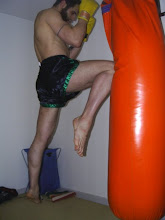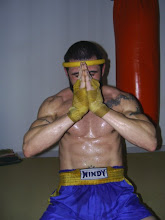 Most of us will have this perception that oversized people do not do martial arts but it is not the case. In Sumo it is a battle of strength where one wrestler will attempt to force their opponent to fall or to go out of the dohyo (circular ring). Sumo is a very unique type of martial art where it is one of the few that has rituals before the competition like Muay Thai.
Most of us will have this perception that oversized people do not do martial arts but it is not the case. In Sumo it is a battle of strength where one wrestler will attempt to force their opponent to fall or to go out of the dohyo (circular ring). Sumo is a very unique type of martial art where it is one of the few that has rituals before the competition like Muay Thai.Originated from Japan, this sport is considered as a Modern Martial Art although it has been around for many centuries. Sumo Wrestlers are to stay at the heya (training stables) where the wrestlers have to strictly follow tradition like the dress code, and even the hairdo.
It was back in the Edo Period in Japan that Sumo started as a form of entertainment or for warriors to find an alternative source of income. The official tournament started in Tomioka Hachiman Shrine back in 1684 and the tournament rules has been changing since.
Professional sumo tournament are organized by Oyakata, which is formed by former sumo wrestlers. Oyakata are members of the Japan Sumo Association and Oyakata are the only trainers that are accredited to teach Sumo officially to new wrestlers in their training stables.
There are few levels for Sumo Wrestlers unlike other Martial Artist where they obtain a belt/rank and get to keep it. For sumo, it solely depends on their performance. Even if they reach the top division, the sumo practitioner need to work for it keep the title or they will be downgraded to a lower rank. The thing that interests me most is their salary range. I found this range in wiki. It was shocking but at least you know know how much these big guys earn a month (as of year 2006) excluding the additional income that they can make 6 times a year in the tournaments.
Yokozuna: $24,500 USD / Month
Ōzeki: $20,400 USD / Month
Sanyaku: $14,800 USD / Month
Maegashira: $11,300 USD / Month
Jūryō: $9,000 USD / Month
According to the rules the amateur tournaments are divided into the following weight classes:
Male
Lightweight: Maximum weight of 85 kg
Middleweight: Maximum weight of 115 kg
Heavyweight: Above 115 kg
Open Weight: Unrestricted entry
Female
Lightweight: Maximum weight of 65 kg
Middleweight: Maximum weight of 80 kg
Heavyweight: Above 80 kg
Open Weight: Unrestricted entry
Image taken from: talesfromanopenbook.files.wordpress.com












No comments:
Post a Comment